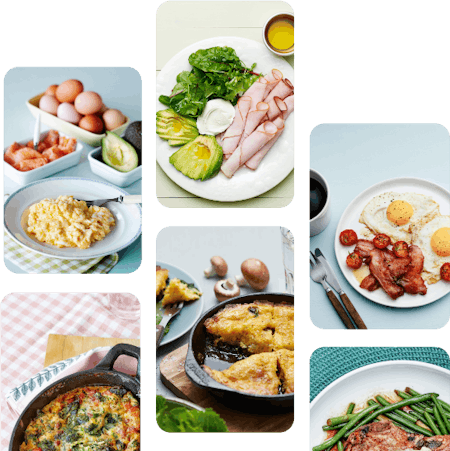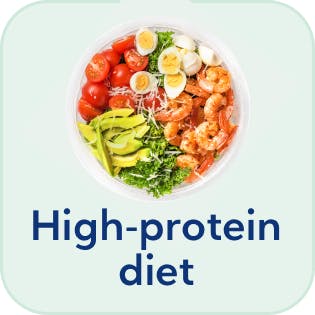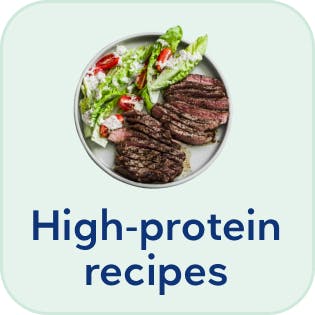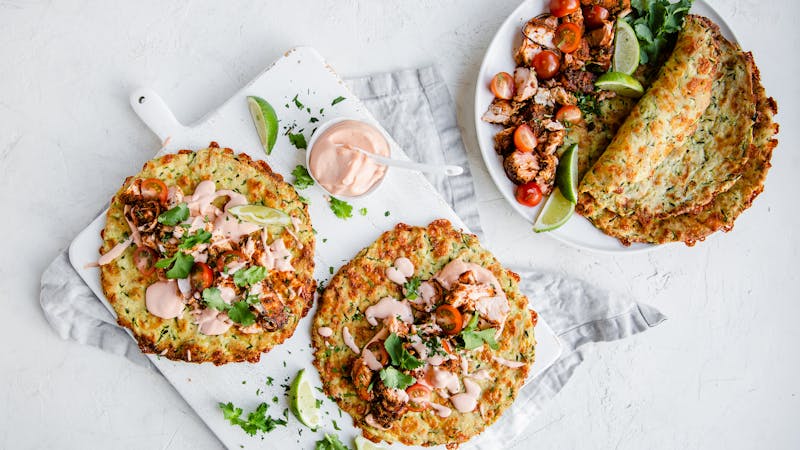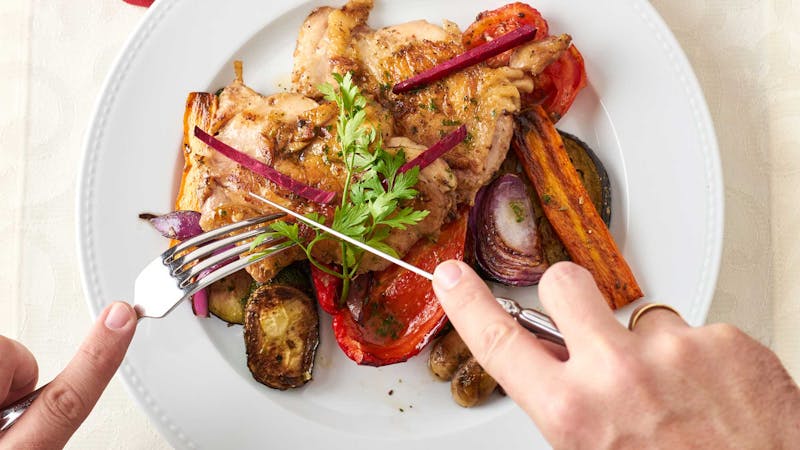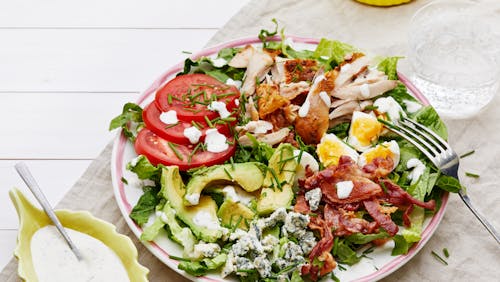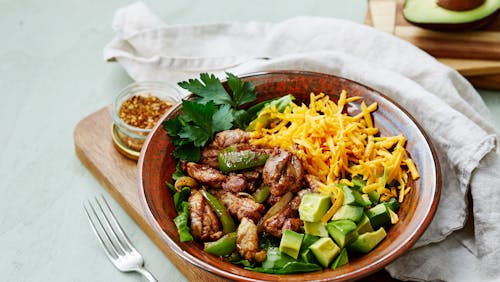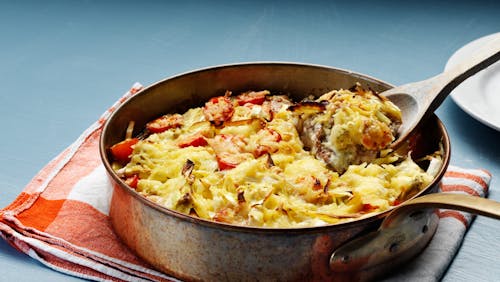High-protein recipe macro guidelines
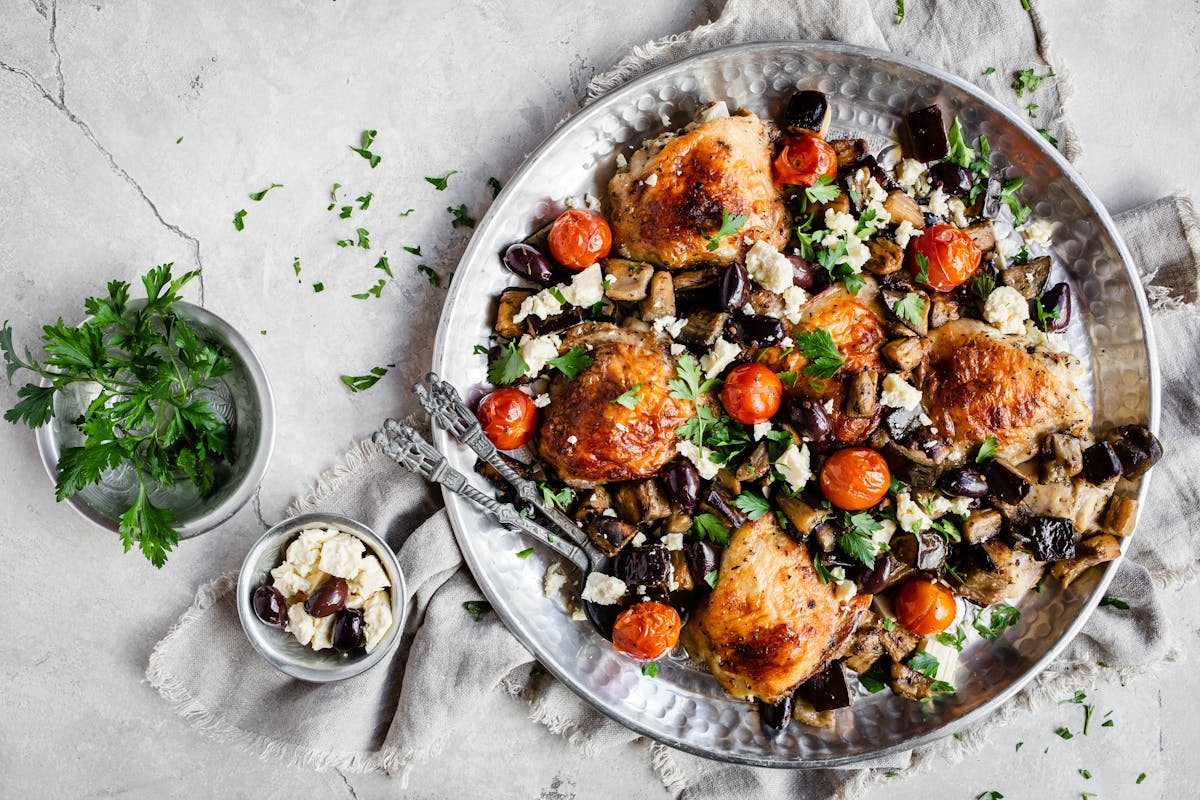

Key takeaways
How much protein do you need on a higher protein diet? Protein can help you feel full and reduce how many calories you’ll eat throughout the day. Find out how much protein you need to boost weight loss. Learn moreWhat makes a Diet Doctor recipe “high protein”? Whether you’re following a meal plan or browsing through recipes, here’s the breakdown of protein, carbs, and calories for our “high protein” meals, side dishes, and treats. Find out more
What makes a Diet Doctor meal plan “high protein”? When you follow Diet Doctor’s keto or low-carb high protein meal plans, you’ll get plenty of protein and very few carbs at a calorie level that can help you lose weight. More
Start your FREE 30-day trial!
Get instant access to healthy low-carb and keto meal plans, fast and easy recipes, weight loss advice from medical experts, and so much more. A healthier life starts now with your free trial!
Start FREE trial!High-protein recipes
All Diet Doctor recipes classified as “high protein” meet the criteria in the table below.
The protein percentage column tells you how much of the recipe’s calories come from protein. Foods, recipes, or meals with a high protein percentage deliver a lot of protein for fewer calories, which can help improve weight loss.
For all levels of carb reduction — keto, moderate low-carb, and liberal low-carb — high-protein meals must provide at least 25% of calories from protein and 30 grams of protein — except for breakfast, which will include at least 25 grams. The carb percentages and gram amounts vary depending on the level of carb reduction.
Our recipes for high-protein breads, appetizers, and snacks also provide at least 25% of calories from protein. Again, this is true for keto, moderate low-carb, and liberal low-carb recipes. While these recipes can help boost your daily protein intake, they usually will not provide enough protein to be considered a meal. Feel free to enjoy them as snacks, but for meals, choose recipes with at least 25 to 30 grams of protein.
The protein grams column tells you how much protein you’ll get per serving.
Higher protein recipe macros
Keto
| Recipe classification | Protein % | Protein grams | Carbs % | Carbs grams | Kcals |
|---|---|---|---|---|---|
| Meal (lunch/dinner) | 25 or more | 30 or more | 5 or less | 7 or less | 700 or less |
| Main course | 25 or more | 30 or more | 5 or less | 7 or less | 700 or less |
| Breakfast | 25 or more | 25 or more | 5 or less | 7 or less | 500 or less |
| Dessert | 25 or more | N/A | N/A | 7 or less | 300 or less |
| Bread | 25 or more | N/A | 5 or less | 7 or less | 300 or less |
| Appetizer | 25 or more | N/A | 5 or less | 7 or less | 300 or less |
| Snacks | 25 or more | N/A | 5 or less | 7 or less | 250 or less |
Moderate
| Recipe classification | Protein % | Protein grams | Carbs % | Carbs grams | Kcals |
|---|---|---|---|---|---|
| Meal (lunch/dinner) | 25 or more | 30 or more | 5 -10 | 20 or less | 700 or less |
| Main course | 25 or more | 30 or more | 5 -10 | 20 or less | 700 or less |
| Breakfast | 25 or more | 25 or more | 5 -10 | 20 or less | 500 or less |
| Dessert | 25 or more | N/A | 5 -10 | 20 or less | 300 or less |
| Bread | 25 or more | N/A | 5 -10 | 20 or less | 300 or less |
| Appetizer | 25 or more | N/A | 5 -10 | 20 or less | 300 or less |
| Snacks | 25 or more | N/A | 5 -10 | 20 or less | 250 or less |
Liberal
| Recipe classification | Protein % | Protein grams | Carbs % | Carbs grams | Kcals |
|---|---|---|---|---|---|
| Meal (lunch/dinner) | 25 or more | 30 or more | 20 or less | 35 or less | 700 or less |
| Main course | 25 or more | 30 or more | 20 or less | 35 or less | 700 or less |
| Breakfast | 25 or more | 25 or more | 20 or less | 35 or less | 500 or less |
| Dessert | 25 or more | N/A | 20 or less | 35 or less | 300 or less |
| Bread | 25 or more | N/A | 20 or less | 35 or less | 300 or less |
| Appetizer | 25 or more | N/A | 20 or less | 35 or less | 300 or less |
| Snacks | 25 or more | N/A | 20 or less | 35 or less | 250 or less |
High-protein meal plan macros
All Diet Doctor meal plans classified as “high protein” meet the criteria shown in the table below:
| Protein % | Protein grams | Carbs % | Carbs grams | Kcals | |
|---|---|---|---|---|---|
| Per day: HP Keto meal plan | |||||
| 25 or more | 90 or more | 5 or less | 20 or less | 1800 or less | |
| Per day: HP Low-carb meal plan | |||||
| 25 or more | 90 or more | 5 – 10 | 50 or less | 1800 or less |
Daily protein target
Use the simple chart below to find out what your minimum daily protein target should be, based on your height.
| Height | Women | Men |
|---|---|---|
| Under 5’4″( > 163 cm) | 90 grams | 105 grams |
| 5’4″ to 5’7″(163 to 170 cm) | 100 grams | 110 grams |
| 5’8″ to 5’10″(171 to 178 cm) | 110 grams | 120 grams |
| 5’11” to 6’2″ (179 to 188 cm) | 120 grams | 130 grams |
| Over 6’2″ (188 cm +) | 130 grams | 140 grams |
